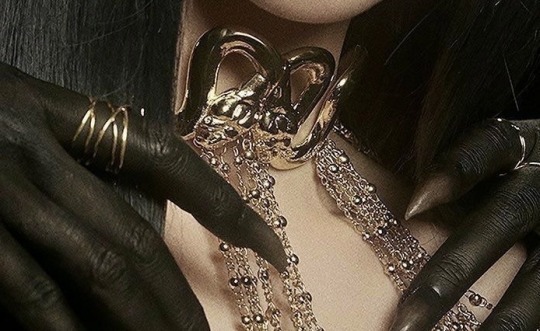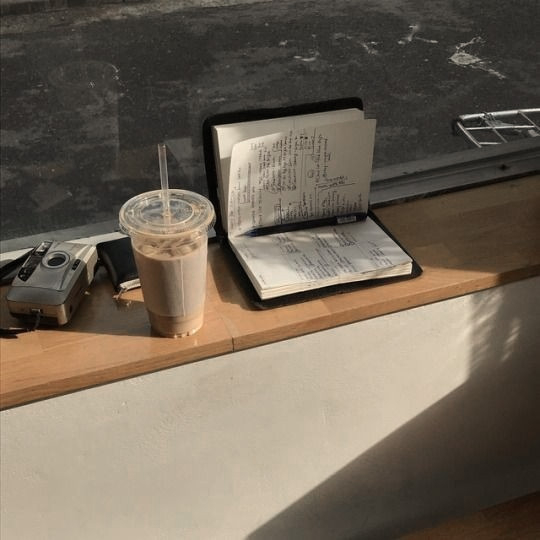Text
The Writer's Guide to Mastering Dialogue
You've heard it a thousand times—show, don't tell. One of the most effective ways to do this in your writing is through dialogue. Dialogue helps bring your story and characters to life, propels the action forward, and engages readers. But crafting realistic, compelling dialogue is an art form that takes practice. Don't worry, Rin's got you covered. In this guide, you'll discover techniques for writing dialogue that sparkles. You'll learn how to make conversations sound natural, differentiate character voices, convey subtext and emotion, and use dialog for exposition. By the end, you'll be writing dialogue with confidence and watching your characters come to life on the page. So grab a cup of coffee or mocha (my favorite), settle in, and let's chat about the art of conversation.
Why Dialogue Matters in Your Novel
Dialogue is one of the most powerful tools in a writer's arsenal. It brings your story to life and creates realistic characters that readers can connect with. If you want to master the art of fiction writing, you need to know how to write compelling dialogue.
Dialogue reveals character and moves the story forward. Through dialogue, readers get a sense of your characters' personalities, backgrounds, and motivations. It's a chance to show, not tell, what your characters are like. Dialogue also propels the action and builds suspense, as characters chat about the events unfolding in the story.
There are a few keys to crafting believable and engaging dialog:
•Make it sound natural. Listen to real conversations for inspiration. Dialogue should flow and feel spontaneous, not stiff or forced. Use contractions, interruptions, and imperfect speech.
•Give each character a unique voice. The way people speak depends a lot on their background, education level, profession, and personality. Capture the subtleties of different speaking styles to bring your characters to life.
•Use dialogue tags and actions. Adding "he said/she said" and descriptions of characters' actions and expressions during conversations helps readers keep track of who's talking and provides context. Use a variety of tags like asked, exclaimed, and murmured.
•Move the conversation along. Keep dialog concise and avoid unnecessary filler words. Get to the point so readers stay interested in what's being said. Dialogue should always move the story forward.
•Show tension and conflict. Interesting conversations often involve disagreement, sarcasm, arguing, or questioning. Create tension through dialogue to keep readers engaged.
With the right techniques, you can make dialogue a pivotal part of your story. So listen, observe, and practice the art of great conversation - your readers will thank you!
Developing Distinctive Character Voices Through Dialogue
To develop distinctive voices for your characters, focus on how they speak. Dialogue is one of the best ways to bring your characters to life and propel your story forward.
Pay attention to your characters’ backgrounds, experiences, education levels, and attitudes. All of these factors influence how people talk in real life, so apply that to your characters. Maybe your wise-cracking character uses a lot of humor and sarcasm, while your shy character speaks hesitantly in short sentences.
Listen for speech patterns, accents, and catchphrases in real conversations and note them for inspiration. Capture the rhythm and flow of natural dialogue.
Give each character their own vocabulary based on their interests, jobs, and lifestyles. The tech geek’s dialogue will differ from the history professor’s.
Establish characters’ voices from their first lines of dialog. Look for a memorable way for them to express themselves. The impatient character may frequently use phrases like “spit it out already!” while the pessimist’s go-to is “what could possibly go wrong?”
Use dialog to reveal aspects of characters’ personalities and backgrounds without telling readers directly. Show, don’t tell. For example, a character who says “please” and “thank you” in every sentence likely has a polite and courteous nature.
Read dialogue aloud to make sure it sounds natural. Get friends or family members to read different characters’ lines. If anything sounds off, rework it.
With practice, crafting distinct voices for your characters through dialog will become second nature. Your characters' voices, conveyed through the words they say and the way they say them, will make your story come alive for readers. So take the time to get to know your characters by how they speak. Their voices are worth developing.
Using Dialogue to Reveal Character
Reveal Character Through Dialogue
Dialog is one of the best ways to reveal details about your characters and show their personalities. Carefully crafted conversations can expose a character's background, values, education level, and more without telling the reader outright.
As your characters talk, think about what kinds of words and phrases they would use based on who they are. An older British gentleman will speak very differently than a teenage skateboarder from California. Listen to people with similar backgrounds and life experiences to your characters for inspiration.
Also consider:
The rhythm and cadence of their speech. Do they speak quickly or slowly? Formally or casually?
Their vocabulary. Does your character use complex words and jargon or simpler language?
Grammar and pronunciation. Does your character follow the rules or have their own way of speaking?
For example, here's a short exchange that shows the contrast between two characters:
Jenny (teenage skateboarder): "Hey, you gonna drop in on the half pipe today or just pose by the ramp again?"
Mr. Edwards (older British gentleman): "I'm afraid vert skating is a young man's game, my dear. I'm quite content to watch you whippersnappers from the sidelines."
Even from this brief conversation, you get a sense of each character's age, background, and attitude without the author explicitly telling you. Mastering the art of subtext in dialog will make your stories come alive and allow readers to discover the depth in your characters for themselves.
Driving the Plot Forward With Meaningful Dialogue
To keep your readers engaged, your dialog needs to propel the story forward. Meaningful exchanges between characters should reveal information, create conflict, and raise the stakes.
Share Relevant Details
Use dialogue as an opportunity to share important details about the characters, their relationships, backstories, and the world they inhabit. For example:
“Did you hear they’re raising tuition again next semester?” Jenny asked.
“Ugh, not again,” Mark groaned. “How are we supposed to afford another five percent?”
This exchange informs the reader that Jenny and Mark are college students struggling with the costs. Look for natural ways to slip in context through dialog without sounding forced.
Create Conflict
Interesting stories thrive on tension, disagreement, and clashing perspectives. Have your characters bicker, argue, and challenge each other. For example:
“You never listen to me!” Alice shouted. “You always have to be right.”
“I’m not trying to be right,” Brian retorted. “I’m trying to protect you, but you’re too stubborn to see that.”
The quarrel fuels the underlying conflict in their relationship and keeps readers wondering how they’ll resolve their differences.
Raise the Stakes
Use meaningful dialog at key moments to increase the urgency, suspense or importance of what’s happening in the story. For example:
“The test results came back—it’s not good news,” the doctor said grimly.
Not only does this distressing announcement raise the stakes for the character’s health issue but it also creates a cliffhanger, leaving the reader wondering about the diagnosis and anxiously awaiting more details.
Meaningful dialog is essential for crafting an engaging story. Use it to inform readers, create conflict between characters, raise the stakes, and propel the plot toward a climax. With practice, writing authentic dialog will become second nature.
Creating Tension and Conflict Through Dialogue
To keep readers engaged, effective dialog should create tension and conflict between characters. As in real life, the conversations in your story should have stakes and push characters outside their comfort zone.
Show underlying tensions
Have characters disagree and argue to reveal underlying tensions. For example:
“You never listen to me. It’s always about what you want.”
“That’s not fair and you know it. I’ve sacrificed a lot for this family.”
This type of emotionally-charged exchange shows the couple has deeper issues to work through regarding resentment and lack of appreciation.
Create awkward situations
Put characters in awkward situations through dialog to ramp up the tension. For example:
“How’s the job search going?”
“Um, still looking. The market’s tough right now.”
“Really? I heard your company is hiring. I put in a good word for you with some people I know there.”
“Oh. Thanks, I guess.”
The second character is now in the difficult position of admitting the job search isn’t going well and they don’t actually have any leads. This cringeworthy moment translates the tension to readers.
Issue challenges and ultimatums
Have characters challenge each other by issuing warnings, demands or ultimatums, for example:
“If you walk out that door, we’re through. I mean it this time.”
“Don’t threaten me. You need me more than I need you.”
Throwing down the gauntlet in this way forces characters to back up their words with actions, which heightens the tension and conflict. Readers will keep reading to see who comes out on top!
Using dialog that highlights tension, creates awkwardness, and issues challenges is a great way to craft page-turning scenes that keep readers on the edge of their seats. Mastering the art of writing gripping dialogue is key to writing a story that resonates.
Avoiding Common Dialogue Mistakes
One of the biggest mistakes new writers make is crafting unrealistic or clichéd dialog. Your characters’ conversations should flow naturally and sound believable to readers. Avoid these common dialog doners:
Repeating Characters' Names
In real life, we rarely use someone's name in every sentence when talking to them. Only use a character's name when beginning a new exchange or for emphasis. Repeating names too often makes the dialog sound unnatural.
Overusing Exposition
Don't have characters explain things solely for the reader's benefit. Only include exposition that makes sense for the characters to actually say to each other. Find other creative ways to convey important backstory or worldbuilding details.
Forgetting Emotion
Dialog without emotional cues like facial expressions and body language can seem flat. Use emotive verbs and adverbs to show how the lines are delivered. For example, "she exclaimed" or "he muttered angrily." Also describe characters' physical reactions and behaviors to further bring the scene to life for readers.
Talking in Complete Sentences
Real conversations are often choppy, filled with interruptions, tangents, and imperfect grammar. Vary your sentence structure and length. Use fragments, run-ons, and breaks when appropriate. Not all dialog needs to be in perfectly punctuated full sentences.
Clichéd Phrases
Certain overused phrases like "it's quiet...too quiet" or "we've got company!" indicate lazy or clichéd writing. Come up with original ways for your characters to express themselves that fit with their unique personalities and situation. Avoid reusing trite or familiar sayings.
With practice, writing natural-sounding dialog will become second nature. Pay close attention to how real people speak, and aim to replicate the flow and cadence in your writing. Follow these tips, and your characters' conversations will truly come alive on the page!
Formatting Dialogue Correctly
When writing dialog, formatting it correctly is key to making it clear and compelling for readers. Here are some tips for formatting your dialogue effectively:
Use quotation marks
Place all dialogue between double quotation marks (“”). This indicates the character is speaking. For example:
“Hello,” she said. “How are you today?”
Start a new paragraph for each new speaker
Having each character's dialog on its own line makes it easy to follow who's talking. For example:
“Did you finish your homework?” Mom asked.
“I'm almost done,” I replied. “Just have some math problems left.”
Describe the speech
Use speech tags like "said", "asked", "replied" to indicate how the dialog was delivered. For example:
“I don't want to go to bed yet,” the little girl whined.
Punctuate properly
Place punctuation such as periods, commas, question marks, etc. within the quotation marks. For example:
“Where are you going?” she asked.
I said, “To the store. Do you need anything?”
Use beats
"Beats" are actions or descriptions that replace the "he/she said" tags. They make dialog more engaging and help set the scene. For example:
"I'm tired." John yawned and rubbed his eyes.
"Then go to sleep." Mary folded her arms, annoyance in her tone.
Avoid over-tagging
Don't tag every single line of dialog with "said" or the character's name. Let context and formatting do some of the work for you. For example:
"Did you talk to Mom today?"
"Yeah, she called this morning."
"What did she say?"
"That she'd be home in time for dinner."
Following these guidelines will make your dialogue clear, compelling, and help bring your story to life. Readers will appreciate dialog that flows naturally and is easy to follow.
Using Dialogue Tags Effectively
To write effective dialog, you need to master the use of dialog tags. Dialog tags are the parts of speech that indicate who is speaking, such as “he said” or “she asked”. When used properly, dialog tags can enhance your story without distracting the reader.
Choose tags that match the tone
Pick dialog tags that match the emotional tone of the dialog. For example, use “he whispered” for hushed speech or “she shouted” for loud, angry speech. Avoid reusing the same generic tags like “he said/she said” repeatedly, but don't get too creative either. Stick with simple verbs that imply the manner of speech.
Use action tags
Action tags describe a character's physical actions or expressions while speaking. For example, "“I’m not going,” he shook his head.” or ““What a day!” She ran her hands through her hair and sighed.” Action tags bring dialog to life and help the reader visualize the scene. They also give you an opportunity to reveal character details.
Drop the tag when implied
Once two characters establish a back-and-forth dialog, you can often drop the dialog tags altogether. As long as it's clear who is speaking, the tags become unnecessary. For example:
“Did you finish your homework?” Mom asked.
“Most of it,” I said.
“Most of it? What didn’t you finish?”
“Just some math problems. I’ll do them after dinner.”
“You’d better. I’m checking it tonight.”
After the first two lines, the reader understands that Mom and I are the speakers, so the remaining dialog does not need tags. Dropping implied tags creates a snappier feel and prevents repetitive, unnecessary tags.
Using a mix of well-placed dialog tags, action tags, and implied dialog, you can craft seamless conversations between characters that flow naturally, without distraction. Keep practicing and listening to real-world conversations for inspiration. With time, writing compelling dialog will become second nature.
FAQs About Writing Dialogue
When writing dialogue, questions inevitably come up. Here are some of the most frequently asked questions about crafting realistic and compelling dialogue.
Do I use quotation marks or italics?
In fiction writing, use quotation marks (“”) to denote direct speech. Only use italics for thoughts or emphasis. Quotation marks allow the reader to easily distinguish between dialog and narration.
How do I avoid “he said, she said”?
To prevent repetitive “he said/she said” tags, use action tags that describe the speaker's actions or expressions. For example:
“We should get out of here,” he whispered, glancing around nervously.
She slammed her fist on the table. “Why didn’t you tell me sooner?”
You can also drop the dialog tag altogether if the speaker is clearly identified through context or action. The dialog itself and how you structure the conversation can imply the tone.
How do I make dialogue sound natural?
Pay attention to the cadence and rhythm of actual conversations. Dialog should:
Sound like natural speech, not formal writing. Contractions are okay!
Have an easy back-and-forth flow. Keep responses concise and avoid monologs.
Capture unique speech patterns based on a character's background and personality.
Include interruptions, changes in subject, and imperfect grammar. We don't speak perfectly in real life!
What are the rules for punctuating dialog?
Use a comma between the dialogue tag and the dialog: “Hello,” she said.
If the dialog tag comes before the dialog, end it with a comma: She said, “Hello.”
If the dialogue is interrupted by a dialog tag, use commas to separate it from the tag: “Hello,” she said, “how are you?”
Use a period to end a sentence of dialog: “Hello.”
Use a question mark for a question: “How are you?” she asked.
Use an exclamation point for excitement or emphasis: “Wow!” he exclaimed.
Start a new paragraph each time the speaker changes.
Following these tips will have you crafting dialog like a pro in no time. Let me know if you have any other questions!
Additional Tips For Writing Dialogue
Keep it concise
When writing dialog, less is more. Keep exchanges brief and avoid long speeches. Readers will get bored quickly if characters drone on and on. Focus on using just enough dialog to convey key information or advance the scene.
Use natural language
Write dialog like people really speak. Use casual language, contractions, slang, and imperfect grammar. Drop words like “um”, “like”, and “you know” into conversations to make them sound authentic. Read your dialog aloud to ensure it flows naturally. If it sounds stilted or awkward when spoken, it will come across that way to readers as well.
Share emotions
Dialog should reveal characters’ emotions and attitudes. Have characters express feelings like excitement, frustration, fear or affection through their word choice, tone, and body language. For example, a character who sighs, rolls their eyes or speaks in a sarcastic tone conveys a very different emotion than one who smiles, makes eye contact and speaks enthusiastically.
Keep it relevant
All dialog should serve a purpose, whether to reveal something about a character, advance the plot or set a mood. Avoid “empty” exchanges that fill space but add no value. If a conversation seems pointless or dull, cut or rewrite it.
Use action and description
Don't rely solely on dialog to carry a scene. Include action and descriptions to give readers a more complete picture. For example:
"Where were you?" Anna asked.
Mark sighed and ran his fingers through his hair. "I got stuck at work. I'm really sorry."
The description of Mark's actions and appearance helps the reader understand his emotional state and see the full context of the conversation.
Leave room for interpretation
Don't have characters over-explain or outright state their feelings and motivations. Leave some details to the reader's imagination. For example, instead of:
"I'm angry that you lied to me," Amy said angrily.
Try:
Amy folded her arms and glared at him. "You lied to me."
The emotional context is clear without having to explicitly state Amy's anger. Subtlety and nuance in dialog make for a more engaging read.
Conclusion
So there you have it, the keys to mastering dialogue/dialog in your writing. I hope my extensive research was enough information for you all. Focus on listening to the voices around you, develop unique voices for your characters, keep your exchanges tight and impactful. Remember, dialog should always move the story forward, not just fill space on the page. With practice, writing compelling dialog can become second nature. Now go eavesdrop on conversations, study your favorite books and shows, and get to work crafting those conversations. Your characters and readers will thank you for it. Keep at it and before you know it, you'll be writing dialog with the best of them!
(Keep in mind I used both dialog and dialogue just in case there's a few who get annoyed with that.)
Join my discord server if you'd like to talk to other writers, authors, and anyone who loves writing like you. Receive updates on exclusive content! Don't miss out.
Want me to turn Your character into a Artbreeder portrait? Fill this form out! ↓
Copyright © 2023 by Ren T.
TheWriteAdviceForWriters 2023
724 notes
·
View notes
Text
I typically never make nye goals, because well, honestly I never follow through with them. So instead of goals for the year, I think I just want goals to start with. A routine is really what I need to stay consistent. I’m hoping these starts can lead to one. 2023 brought a lot of challenges with my family, and it will never be the same. But I won’t let it bring me down, and I want to move forward with positive vibes always. I truly believe being positive will always bring positive things forward.
Therefore I want to
Remain consistent;
In manifesting
In cleansing my crystals
In stretching
In budgeting
In practicing korean
I also want to focus on writing in my self care journal, which I believe will help me balance my relationships, work, school, and social life. I even made a vision board, which I’ve heard good things about. I need to stop using words like “I guess” “maybe” or “I hope” and start using words that affirm. “I will!” Here’s to 2024.
What are some things that you do, that may help me achieve this? Some tips? I’m not necessarily a seasoned witch but I’d like some tips if anyone has any. I know it’s different for everyone. I typically affirm by journals, music and intentions within. I want to try something new.
#manifesting techniques#manifest#new years resolution#new years#2024#intentions#crystals#journal#law of attraction#budgeting#learning korean
1 note
·
View note
Text
How to Write A Victorian Era Fiction Novel
Step back in time and immerse yourself in the world of Victorian Era Fiction. With its unique social customs, political landscape, and fashion trends, the Victorian Era provides a fascinating backdrop for storytelling. But writing a compelling fiction novel set in this era requires a great deal of attention to detail and research. In this guide, I'll help you explore the key aspects of Victorian Era Fiction writing and provide a step-by-step process for crafting a novel that transports readers to this captivating time period.
Exploring the Fascinating World of Victorian Era Fiction
The Victorian Era is often romanticized in popular culture as a time of elegance, innovation, and progress. It was a period of intense change in politics, fashion, and morals, resulting in a complex society that ultimately makes for rich storytelling opportunities.
Discover the Allure of Victorian Era Fiction and what Draws Readers in
Victorian Era Fiction captures the uniqueness of a past era while also holding up a mirror to current societal issues. It allows us to explore the past while still being entertained by a well-crafted narrative. Readers are often drawn to this genre for its intriguing characters, turbulent plots, and lush imagery that transports them back in time.
Understand the Historical Context of the Era and How it Influences Storytelling
The Victorian Era was a time of industrialization, rapid urbanization, and intense social change. This turmoil can be seen in novels of the time, where authors often explored themes of class conflict, gender inequality, and societal unrest. Therefore, it's important to have a strong understanding of the historical context surrounding a novel, so that it can be effectively reflected in the storytelling.
Explore Popular Themes and Tropes in Victorian Era Fiction
Themes and tropes like romance, mystery, adventure, orphan narratives, the supernatural, and the gothic are prevalent in Victorian Era Fiction. Authors like Charles Dickens, the Bronte sisters, Arthur Conan Doyle, and Oscar Wilde all employed these popular motifs in their works. By incorporating some of these prevalent themes and tropes into your writing, you can create a compelling, Victorian-esque narrative that encapsulates the era's allure.
Step-by-Step Guide to Writing a Compelling Victorian Era Fiction Novel
If you are fascinated by the Victorian Era and would like to write a fiction novel set in this time period, here's a step-by-step guide to help you get started:
1. Begin with a solid story idea that can be transformed to fit the era
Start by developing a unique story idea that can be adapted to the Victorian Era. Consider how the story and characters can fit into this time period and what aspects of the era can be incorporated into the narrative. This will help you create a distinct and compelling story.
2. Craft a diverse cast of characters that reflect the social norms and customs of the time
The Victorian Era had strict social customs and norms that affected every aspect of life. Create characters that reflect these societal constraints and expectations. Explore how different genders, classes, and races interacted during this time period to develop diverse and authentic characters.
3. Use sensory details to create an immersive experience for readers and transport them to the era
Details about clothing, fashion, architecture, and language can help transport readers to the Victorian Era. Incorporate descriptive language and sensory details to create an immersive experience that will allow readers to see, smell, and hear the world of your story.
4. Layer multiple plotlines to create a complex and interesting story
The Victorian Era was a time of great change and upheaval, with many political, social, and economic events happening simultaneously. Consider weaving multiple plotlines into your narrative to create a complex and interesting story.
5. Incorporate historical events or lesser-known facts to create unexpected twists in the story
Research the era and incorporate historical events or lesser-known facts into your story. This will help create unexpected and surprising plot twists, while also giving readers a sense of the time period and its influence on the narrative.
6. Experiment with different story structures or narrative devices to keep the reader engaged
Experiment with different story structures or narrative devices to keep readers engaged. Consider using multiple points of view, non-linear timelines, or other creative techniques to make your story stand out.
Writing a compelling Victorian Era fiction novel requires research, creativity, and attention to detail. Following these steps can help you create an immersive and unforgettable story that captures the essence of the time period and leaves readers wanting more.
Researching Key Aspects of the Victorian Era to Enrich Your Fiction
If you want to write a compelling Victorian-era fiction novel, it is important to do thorough research about the time period to ensure your story is accurate and authentic. Here are some key aspects of the Victorian Era that you should consider incorporating into your research:
Investigate the political landscape and social customs of the era
The Victorian Era was a time of significant social, political, and economic change. From the reign of Queen Victoria to the period of industrialization, it is crucial to understand the issues and events that shaped the world during this time.
Examine fashion, architecture, and language used during the time period
The Victorian Era was famous for its distinct fashion style, from the upper-class women's corsets and hoop skirts to the working-class attire of the time. You should also research Victorian architecture, as this can heavily inspire the setting of your novel. Finally, understanding the language used during this time is also key, as it allows greater authenticity in your dialogues and narration.
Incorporate historically accurate events or figures into your story for added depth
History is full of exciting stories to draw inspiration from. Whether you want to incorporate real-life events or famous figures of the Victorian Era, doing so can add depth and color to your story. Through research, you can create a more rich and accurate version of Victorian England that would captivate your readers.
By taking the time to research key aspects of the Victorian Era, you can bring depth and authenticity to your fiction writing that will make your story come to life.
Creating Authentic Characters in Your Victorian Era Fiction Novel
One of the key factors in creating a compelling Victorian Era Fiction novel is the characters. Here are some tips and tricks to help you create authentic characters that reflect the time period:
Utilize Character Archetypes
During the Victorian Era, certain character archetypes were prevalent in literature. These include the noble hero, the damsel in distress, the villain, and the mentor. By using these archetypes, you can create characters that are believable and realistic for the era.
Consider Social Constraints and Expectations
The society of the Victorian Era was highly stratified, with strict expectations placed on individuals based on their gender, class, and race. When developing your characters, consider the constraints they would have faced based on their societal status.
Explore Interactions between Different Classes
One of the interesting aspects of the Victorian Era is the interaction between individuals of different classes. Use this dynamic to your advantage by creating characters from various social backgrounds and exploring how their interactions impacted their lives.
By incorporating these factors, you can create characters that are authentic to the time period and resonate with readers of Victorian Era Fiction.
Mastering the Art of Dialogue in Victorian Era Fiction Writing
One of the key elements of a successful Victorian Era fiction novel is the ability to master the art of dialogue. This is because speech patterns, honorifics, and language use during the era were vastly different from what we use today. Here are some tips to help you write authentic and engaging dialogue for your Victorian Era fiction novel:
Study the Language and Speech Patterns of the Era
Before writing dialogue, it's crucial to understand how people spoke during the Victorian Era. Reading books written during that time period, such as Charles Dickens' works, can give you a good idea of the vernacular and speech patterns used. Additionally, historical documents such as letters, diaries, and newspapers can offer unique insights into how people communicated with one another.
Utilize Proper Language and Honorifics to Reflect the Social Hierarchy
Addressing others using proper language and honorifics was particularly important during the Victorian Era, as it reflected the strict social hierarchy of the time. It's important to research and understand the different titles and forms of address used for different classes and professions, and to incorporate them into your dialogue to reflect the social structure of the era.
Consider the Impact of Vernacular or Slang on Different Characters from Varying Backgrounds
Vernacular and slang were commonly used during the Victorian Era, particularly among working-class characters. It's important to consider the use of dialects and slang words when crafting dialogue for characters from diverse backgrounds. However, it's also important to avoid caricaturing characters and being insensitive to different accents and dialects.
In conclusion, mastering the art of dialogue in Victorian Era fiction writing is crucial for creating an immersive and authentic reading experience. By studying the language and speech patterns of the era, utilizing proper language and honorifics, and considering the impact of vernacular or slang on different characters, you can craft engaging and believable dialogue that transports readers to the fascinating world of the Victorian Era.
Crafting Intriguing Plot Twists in Your Victorian Era Fiction Novel
One of the most crucial elements of a successful Victorian Era fiction novel is a compelling plot that keeps readers on the edge of their seats. Here are some tips to craft intriguing plot twists that will keep your readers engaged:
Layer Multiple Plotlines
One way to create a complex and interesting story is to layer multiple plotlines. For example, you could introduce a mystery or romance subplot that weaves throughout the main storyline. This will keep readers guessing and prevent the story from feeling one-dimensional.
Incorporate Historical Events or Lesser Known Facts
Another way to create unexpected twists in the story is to incorporate historical events or lesser-known facts. This not only adds depth and authenticity to the story but can also surprise readers who may be familiar with the era. For example, you could include a true crime event or a lesser-known social custom that adds intrigue to the plot.
Experiment with Different Story Structures or Narrative Devices
Finally, don't be afraid to experiment with different story structures or narrative devices. For example, you could use flashbacks or alternate narrators to reveal new information or perspectives on the story. This can keep the reader engaged and add complexity to the plot.
By incorporating these tips, you can create a Victorian Era fiction novel that will keep readers enthralled from beginning to end.
Editing and Polishing Your Victorian Era Fiction Novel: Tips and Tricks
After completing your draft, it's time to polish and edit your manuscript to perfection. Here are some tips and tricks to consider:
Take time away from the manuscript before editing:
Leaving your manuscript for a few days or even weeks before revisiting it can help you gain a fresh perspective. You'll be able to look at your work with a critical eye and spot any plot holes, inconsistencies, or areas that need improvement.
Read the manuscript out loud:
Reading your work out loud is an excellent way to catch any grammatical errors or awkward phrasing that may have slipped by during the writing process. It can also help you identify areas where dialogue sounds forced or unnatural.
Ensure consistency:
It's important to ensure that the tone and language consistency remain steady throughout the entirety of the manuscript. Pay attention to character development and ensure that all details, such as clothing or mannerisms, remain consistent throughout the story.
Work with beta readers or editors:
Having a fresh pair of eyes on your manuscript can help identify areas that need improvement. Consider working with beta readers or professional editors to gain a new perspective on your work and fine-tune your manuscript.
Take breaks:
Editing and polishing your work can be a tedious process. Take frequent breaks to avoid burnout and to maintain your focus and productivity.
Keep a style guide:
Keeping a style guide can help you maintain consistency and avoid errors in grammar, punctuation, and formatting. Use this guide both during the writing and editing process.
Final thoughts:
Editing and polishing your manuscript can make or break your novel. Take the time needed to ensure that your work is flawless and reflective of the fascinating world of Victorian Era Fiction.
Conclusion
In conclusion, writing a Victorian Era fiction novel can be an immersive and rewarding experience, as it requires a deep dive into the historical context of the era, and a keen understanding of Victorian sensibilities and societal customs. By following the steps and tips laid out in this guide, writers can create a compelling story that transports readers to a bygone era filled with intrigue, romance, and adventure. So why not take the plunge and embark on a journey into the fascinating world of Victorian Era fiction writing?
Copyright © 2023 by Ren T.
TheWriteAdviceForWriters 2023
366 notes
·
View notes
Text
Forget Clarity of Description
I often get stuck in this writing-mode in which the vision I have of what’s happening is so vivid I just need everyone else to see it too. I’ve also seen this in a lot of other people’s work, when description goes on for paragraphs (or one large one), just listing things the character is experiencing.
This stuff is important for you as the writer to know, but ultimately, making sure your readers are imagining the exact same thing as you is not the goal. Every reader is going to make the scene their own, they’re never going to see exactly what you do, so what we should rather be aiming for is evoking emotion.
Is the girl tall, blond, with striking blue eyes and rosy cheeks, wearing a pink vest and a white button-up shirt underneath, white shoes, and a black skirt?
Or is the girl bobbing on her feet, her eyes alight, blond hair haloed around her face like a sunrise?
The first example we can get a pretty clear image of what the girl looks like. The second one, we get her personality, what the narrator thinks of her (comparing her to sunshine!), a general ‘vibe’. Same goes for other descriptions: places, situations, backstory or exposition can all evoke an emotion in readers, and that’s what they’re going to remember.
It goes without saying, but tying in those physical details into description is still important. In the second example I still told readers the girl had blond hair, but those other details weren’t as necessary as her personality, vibe, and the impression she left on our narrator. Balance is everything.
I would much, much rather give a description that creates a strong emotional response but a confusing image, over one that gives a clear image and not much else. What are some descriptions that have stuck with you?
Good luck!
756 notes
·
View notes
Text
Me having to write plot when I just want to write smooches:

561 notes
·
View notes
Text
i want that slut covered in blood and traumatized by his actions
44K notes
·
View notes
Text
Fanfic Recs?
I'm looking for some good fanfic recs here on tumblr (or elsewhere) as I'm really in the mood to start reading some one shots again. They don't have to be in any specific targeted fandoms but I'm in the mood for those with themes of danger / angst / travel / fantasy and the like!
0 notes
Text
Shout out to George. He was in like, one episode of Merlin and here he is. In every single merlin fic ever.
725 notes
·
View notes
Text
I often have nights where my eyes water due to tiredness, but my mind won’t stop reeling (about nothing in particular, sometimes some things that are too particular…) and it creates an endless cycle of eye bags and trying my damned to resist dozing off in class. The amount of coffee I buy has increased since last semester, and so have my spending habits. Which I can’t seem to help now. Why? Because I have money to spend. But, you had money to spend last semester as well? Yes, I did. But I felt like I was in control of my life last semester and perhaps that’s why I am unable to control myself now. Because money is the only thing I have control over, and thus I’ll spend it freely with no hesitation. I had never had that problem before, but it seems that this year I have been plastered with problems. No matter how I try to pretend they won’t effect me, clearly I was mistaken. It’s manifesting itself in my actions, in my sleepless nights, in my mood swings, in my relationships. It’s hard to stay social. Which normally wouldn’t bother me (I’m comfortable in my solitude) but that is now affecting my work. And that effects my stress level, which only builds. And I don’t know why I can’t get myself back on my feet. It feels like self sabatoge. I know what I must do but doing so triggers a small piece of anxiety inside me that festers and becomes more erratic as I avoid it; and I’m not sure how stops head from spinning. It’s like a bus stop at night, the spotlight is there but no one is around to view it.

They say time heals all wounds but mine was only freshly cut; left to bleed and become infected. No one has tended to it, though its clearly there. I’ve refused to take the steps I need to dress it. But dressing it scares me. Just because it’s dressed doesn’t mean it won’t continue to throb and hurt. And I’ll always be reminded of it when the bandages are gone. So I let it fester, I let it sit there bared to the world. Maybe I feel comfort in it, knowing that it can’t make me feel worse if I don’t tend to it. As if getting used to the pain is better than not feeling it at all. Maybe it’s becoming to metaphorical and I should stop here.
0 notes
Text





Fairy Alcove
Started at the end of 2022 and finished in July 2023.
Available as a print for a limited time. <3
2K notes
·
View notes
Text
Number One Priority



☆ I am the center of my own universe
♡ Everything and everyone I desire gravitates around me
☆ I am the absolute top priority
♡ I run every aspect of my reality
☆ I control this entire universe effortlessly
♡ I can change the universe with a snap of my fingers
☆ My mental emotional and physical needs are always prioritized
♡ My needs are prioritized in my every relationship
☆ I love being pampered and prioritized in every single moment
♡ This whole multiverse caters to my every whim wish desire and need
☆ I am literally the cutest most lovable person in the entirety of the universe
♡ I am always the most adored most pampered and most perfect
☆ My needs are a priority and my needs are prioritized
♡ I am always cherished every second of every day
☆ I am on the highest possible pedestal
♡ My pedestal is in heaven because I am a god
☆ I am always treasured and wanted in every possible way
♡ My aura and personality is mesmerizing and addictive
☆ So many people want to cherish me and adore me
♡ My {S.P} craves to fulfill my every wish want and desire
☆ My {S.P} yearns to worship and adore me
♡ I radiate an aura of absolute regality in every situation
☆ People beg for the opportunity to worship me pamper me and love me
♡ I am constantly in a state of being honored and respected by everyone around me
☆ I always get everything I want the second I want it
♡ I was made to be pampered adored and cherished
☆ I get my every wish with with a clap of my hands
♡ I am the main character of my reality, everything revolves around me
☆ my {S.P} treats me like a god
♡ I radiate an angelic and divine aura every second of the day
2K notes
·
View notes
Text







TIME IS AN ILLUSION.
-before starting this post i want to make a few things clear :
1- 3D = your “current” reality. your “conscious” reality that functions with “time”
2- 4D = your actual reality. the one that doesn’t function with “time”, your “subconscious” reality.
3- the 4D >>> 3D, the 3D is nothing but a reflection of what the 4D is made up of, the core belief.
i will start of with a few examples of why time isn’t real. it is simply an invention that humans created to manage their day-to-day activities. time is simply an invention. it is not real.
THE ROOM & THE ROOFTOP.
i want you to imagine a room. a room with no doors, it only has one small square shaped window where you can see a field outside of it, you focus outside the window to see people walking, the first person was an old man in his late 40s going to work. you saw him walking in and outside the frame registering his presence in present and future as he walked off,
seconds later a woman in her 20s walked in front of the square shaped window, you again registered her presence in the present (as she was walking in front of the window) and the future (she continued walking off, out of the window’s frame)
a few other seconds later, a young girl walked in front of the square shaped window, you registered her presence in the present and future self before she walked off to the end of the field following the woman and the man.
now the only two tenses that you saw everything in was present and future, correct?
picture someone standing on the roof top of the room you were in, what tense would they have witnessed the old man, the woman and the young girl walking in? they would have seen it all in the present.
SPACE AND ITS LAWS.
one of the most mind-boggling theories that i’ve heard about space (before correlating it to manifesting & the law of assumption) is how we view everything in space in our current present tense when everything that we’re viewing is in the past tense.
all the stars that you see at night, all the black holes that have been discovered and many other space phenomenas ranging from planets that are a billion light years away to collisions of different universes are all in the past tense. everything that you see is all in the past tense.
collisions of certain universes that are reaching our universe so we can view them with our technology are collisions that happened billions of light years ago. and we’re able to see them now, in our present tense.
one of the simplest examples i could provide is sunlight, the sunlight takes around eight minutes to travel from the sun to the earth, what we view and see and feel as the “sunlight” is from the past.
it took billions of light years for the view and shape of the universe to reach us, to reach our own present tense.
the existence of time is merely an idea, “time” itself- as mentioned before- is nothing but an invention of humankind to manage their activities.
LIFE ON MERCURY.
the biggest and most obvious difference between mercury and earth, is time.
while earth’s one “day” is made up of 24 hours, mercury’s one “day” is made up of 1,408 hours.
in this third example, i want you to picture yourself and a sibling, friend or any other person you want.
you both were born on the same exact date of 2000, july 1st, 12:00 PM.
the obvious difference in time between earth and mercury will have an affect on both of your “aging times”
if you were to stay on earth, you would age normally and live a healthy life compared to what the other person would go through if they were to live on mercury,
if the second person lived on mercury- the second person would undoubtedly, be way younger than you are when arrived to earth, and compared to you.
since time is way slower in mercury than it is on earth, the second person will age slower,
- what does this have to do with manifesting?
your current reality, -that you’re perceiving with your five senses- while using your conscious mind is nothing compared to your subconscious mind that doesn’t even function with time.
your subconscious mind lives in all three tenses at the same time, “time” doesn’t even exist for your subconscious mind.
when you affirm and persist for a certain desire, command your subconscious that you do have this certain desire. that you do own this certain thing you want, your subconscious mind doesn’t question it.
because your subconscious mind accepts what it’s given. it doesn’t live off the five senses like your conscious mind does. it feeds off of the thoughts that you feed it daily, it accepts everything. because it doesn’t depend on time nor the five senses that you perceive your current reality with.
use your subconscious mind to your advantage, it is powerful. it brings everything you want into reality. whatever you’re able to think of in your 4D, you can manifest it into your 3D instantly. if that’s what enters and saturates your subconscious mind who’s a slave to you then what’s stopping you from getting your desires? absolutely nothing.
your first and easiest connection to the 4D, a reality where time doesn’t even exist is your subconscious mind.
please remember how time isn’t even real for your subconscious mind. if you want something to happen instantly, it will because it has no choice. you, with your conscious mind, aren’t even able to perceive a quarter of what your subconscious mind perceives every nanosecond. your subconscious mind is incredible. it’s a beast. use it to your advantage, and live the life that was once just an “imagination”.
2K notes
·
View notes
Text
why am i so obsessed with merthur
what is it about them
WHAT IS IT
(no actually someone tell me)
6K notes
·
View notes
Text
please go give love to this editor on tiktok!! I just found this merlin christmas edit and I’m in love with it. Merry Christmas, let’s cry together for the 10th anniversary.
#merlin#bbc#bbc merlin#arthur#pendragon#netflix#fuck netflix#10th anniversary#lancelot#tiktok#edit#video edit#tiktok edit#gaius#morgana#knights#medieval#i miss them#crying#screaming#throwing up
9 notes
·
View notes



